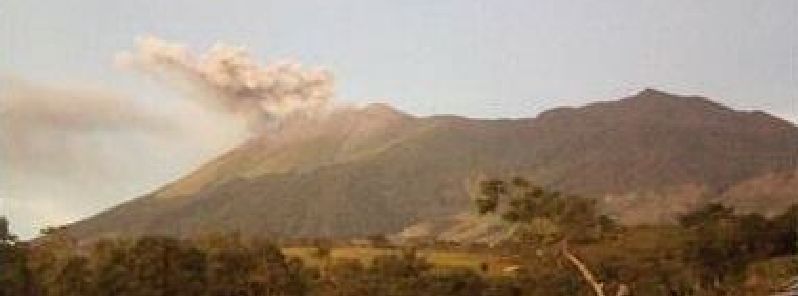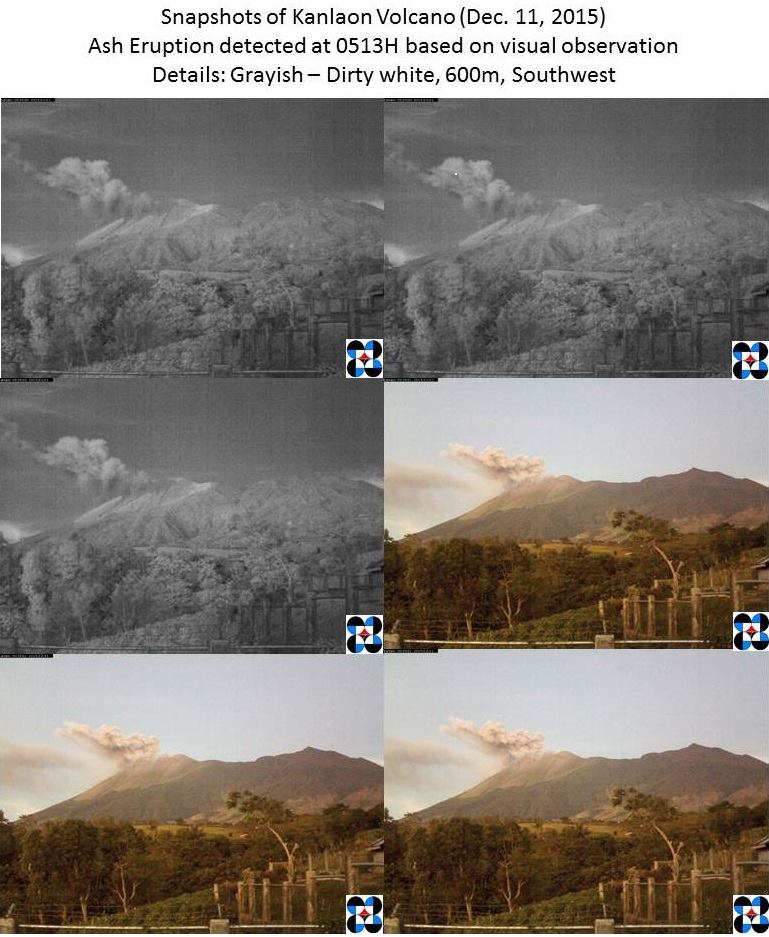Kanlaon volcano enters new phase of increased activity, Philippines

The Kanlaon Volcano in Negros Oriental province, the Philippines produced a low-energy ash eruption on December 11, 2015, at 05:13 am (local time), the Philippine Institute of Volcanology and Seismology (PHIVOLCS) reported. The last known eruption of this volcano took place in 2006.
In the last 24 hours, four volcanic earthquakes were detected by the Kanlaon Volcano seismic network, two of which were accompanied by ash eruption, lasting for about one minute, based on visual observation. The eruption produced a cloud of ash of grayish to dirty white color and climbed up to 600 m (1968.5 feet) above the volcano. The ashes then traveled southwest and fell across San Jose, La Castellana on the southwest slope of the volcano.

Image credit: PHIVOLCS via @CultureVolcan
This latest phase of increased activity started on November 23, 2015 when PHIVOLCS reported that the seismic network for Kanlaon detected an explosion-type signal beginning at 09:30 local time, culminating with an 8-minute-long steam explosion. Observers reported that a white plume rose 1 – 1.5 km (3 280 – 4 920 feet) above the crater and drifted SW, and rumbling was heard in local areas. The Alert Level was then raised to 1 (on a scale of 0-5).
11 volcanic earthquakes have been detected in the period between November 24 and 25 as well as continuous steam emissions with minor ash content. On November 25 emissions of gas and ash reached 150 m (492 feet) above the volcano crater and drifted southwestward.
On December 10, Phivolcs reported one volcanic earthquake in a 24 hour period and emission of wispy, white steam plume from the volcano summit.
A Level 1 alert remains in effect over Kanlaon Volcano, signaling an abnormal condition and a period of current unrest. Because of the further possibilities of sudden and hazardous steam-driven or phreatic eruptions, the local government and residents have been warned that entry into the 4 km radius of Permanent Danger Zone (PDZ) is strictly prohibited. The aviation pilots have also been advised to avoid flying close to the volcano's summit as ashes from the sudden eruptions can be extremely dangerous to aircrafts.
Geological summary
Kanlaon volcano (also spelled Canlaon), the most active of the central Philippines, forms the highest point on the island of Negros. The massive 2 435 m (7 988.8 feet) high andesitic stratovolcano is dotted with fissure-controlled pyroclastic cones and craters, many of which are filled by lakes. The largest debris avalanche known in the Philippines traveled 33 km (20.5 miles) to the SW from Kanlaon. The summit of Kanlaon contains a 2 km (1.2 miles) wide, elongated northern caldera with a crater lake and a smaller, but higher, historically active vent, Lugud crater, to the south. Historical eruptions from Kanlaon, recorded since 1866, have typically consisted of phreatic explosions of small-to-moderate size that produce minor ashfalls near the volcano.
Featured image: Kanlaon volcano spewing ashes, December 11, 2015. Image credit: PHIVOCLS via @CultureVolcan

Commenting rules and guidelines
We value the thoughts and opinions of our readers and welcome healthy discussions on our website. In order to maintain a respectful and positive community, we ask that all commenters follow these rules:
We reserve the right to remove any comments that violate these rules. By commenting on our website, you agree to abide by these guidelines. Thank you for helping to create a positive and welcoming environment for all.